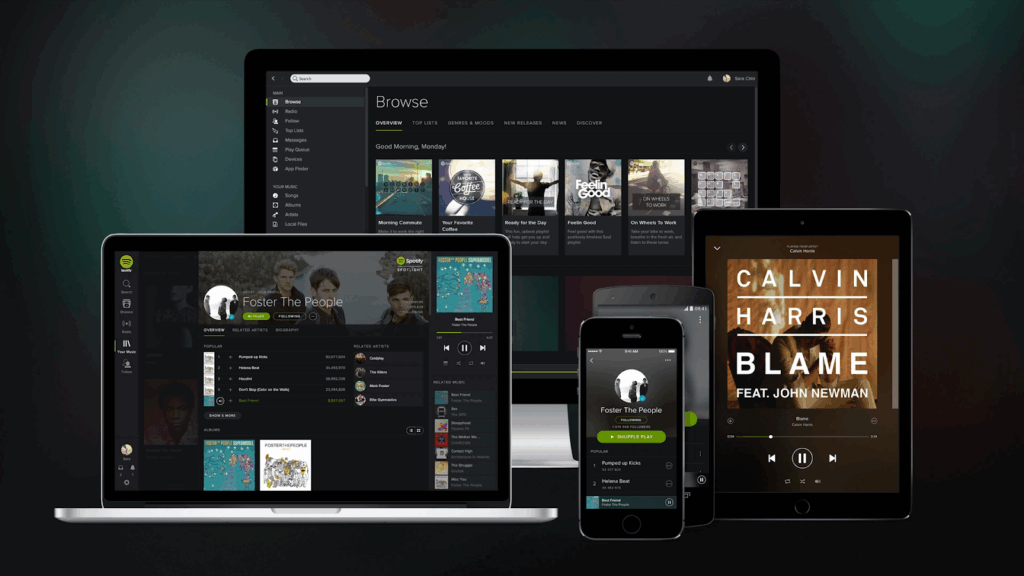A strong brand strategy framework is the foundation of business growth in 2026. Companies with unclear positioning risk losing market share to competitors. Establishing a framework ensures clarity, consistency, and long-term brand value. Hence, choosing the right branding agency can make all the difference, ensuring your strategy, design, and messaging align perfectly.
According to Interbrand, the global value of the top 100 brands increased 3.61% in 2025. Strategic branding goes beyond logos or websites; it integrates visual identity design, brand voice development, and brand experience design into measurable results.
When implementing a brand strategy framework, it’s crucial to find a skilled agency that can align messaging, visual identity design, and customer experience. A capable partner ensures your brand resonates with your audience, stays consistent across all touchpoints, and drives measurable growth.
So, in this guide, we will walk you, as a business owner, through actionable steps to build a framework that drives growth, loyalty, and market recognition.
What is a Brand Strategy Framework?
A brand strategy framework is a structured roadmap that defines your brand’s purpose, values, and positioning. It ensures that every communication, visual, and experience aligns with your long-term identity. Unlike marketing campaigns or visual design alone, a framework focuses on sustainable brand perception and growth over time.
Purpose: This clarifies why your brand exists and the specific problems it aims to solve for your audience. Purpose-driven brands connect emotionally with customers, creating loyalty that lasts. For example, Patagonia emphasizes environmental responsibility, which resonates with eco-conscious consumers.
Positioning: Positioning explains how your brand is unique and valuable compared to competitors. It highlights your differentiators, helping customers understand why they should choose your brand. Tesla’s positioning around innovation and sustainable technology sets it apart in the automotive market.
Messaging: Messaging defines the tone, style, and voice used across all communications. A consistent voice makes every touchpoint recognizable, from social media to customer support. Mailchimp, for instance, uses a friendly, approachable voice that differentiates it from traditional corporate email marketing tools.
A strong brand strategy framework guides teams across marketing, design, and customer experience. It reduces inconsistencies, strengthens brand recognition, and ensures all campaigns reinforce the same core principles. Apple’s framework, for example, emphasizes innovation and simplicity, guiding product launches, advertising, and digital content consistently.
Additionally, a framework provides a reference for internal teams and external partners, helping them make decisions aligned with your brand’s identity. This alignment boosts efficiency, minimizes miscommunication, and enhances customer trust. Brands that implement a clear strategy framework are better positioned to scale, adapt to market changes, and achieve measurable growth over time.
The Importance of Brand Positioning Strategy
A brand positioning strategy ensures your business stands out and is perceived uniquely in the market. Without it, products may appear generic or forgettable.
Studies show that 90% of consumers buy from brands they trust, and 87% are even willing to pay more for trusted brands. Consistency in positioning not only reduces confusion but also strengthens customer trust and loyalty, highlighting the critical role of strategic branding.
Business leaders should consider:
- Customer Segmentation: Identify which audience segments matter most
- Competitive Analysis: Examine direct competitors and substitute products
- Value Proposition: Clearly articulate what makes your brand indispensable
Tesla exemplifies strong positioning by combining premium quality, sustainable innovation, and futuristic design, creating both emotional and functional value.
Crafting a Comprehensive Brand Development Guide
A brand development guide consolidates your brand strategy into clear, actionable standards. It serves as a reference for teams, ensuring messaging, visuals, and customer experiences remain consistent across every touchpoint.
Key Components Include:
Mission and Vision Statements: First, define why your brand exists and the goals it aspires to achieve. These statements not only align internal teams but also create a clear external narrative. For example, Tesla’s vision to “accelerate the world’s transition to sustainable energy” simultaneously guides both product innovation and marketing.
Target Audience Personas: Next, understanding your ideal customers helps craft messaging and experiences that truly resonate. In particular, detailed personas outline demographics, needs, and preferences, thereby enabling campaigns that speak directly to your audience.
Brand Tone and Voice: Additionally, establish the language, style, and personality your brand uses in communications. A consistent voice, in turn, strengthens recognition and builds trust. For instance, Mailchimp’s friendly and approachable tone effectively differentiates it from corporate competitors.
Visual Identity Guidelines: Moreover, standardize logos, colors, typography, and imagery to reinforce recognition. By maintaining consistency across websites, social media, and physical products, you create a cohesive brand impression. For example, Starbucks’ green and white visual identity instantly signals the brand worldwide.
Brand Experience Checkpoints: Finally, outline expected customer interactions across all touchpoints. This approach ensures that service, product delivery, and digital experiences consistently reflect your brand values.
Companies that maintain a structured guide see measurable benefits. Research indicates that businesses report brand consistency improves revenue by 23-33% or more. Following a guide allows teams to communicate confidently and reduces decision-making friction.
Visual Identity Design for Strong Recognition
Visual identity design is a core element of brand recognition, enabling businesses to communicate personality, values, and professionalism instantly. Logos, colors, typography, and imagery act as the visual language of your brand. Consistency across every touchpoint ensures that customers identify your brand immediately, building trust and reinforcing credibility.
Famous Examples:
- Starbucks’ green logo is recognized worldwide, promoting familiarity and brand loyalty.
- Coca-Cola’s red color palette evokes energy, nostalgia, and emotional connection with consumers.
- Nike’s swoosh is instantly associated with performance, innovation, and athletic excellence.
Steps to Strengthen Visual Identity:
- Audit all digital and physical brand assets to confirm alignment with your defined guidelines.
- Standardize fonts, colors, iconography, and imagery across all platforms to maintain cohesion.
- Use templates for social media posts, presentations, advertisements, and campaigns to simplify the application.
- Integrate periodic reviews and updates to design elements to ensure they stay relevant to market trends.
- Train internal teams on visual guidelines to maintain consistency across marketing, customer experience, and product design.
A strong visual identity does more than make your brand look appealing. It complements your brand strategy framework, fosters customer trust, and enhances brand recall across platforms. By maintaining uniformity and carefully managing visual elements, businesses can create a memorable impression, drive engagement, and reinforce their market positioning.
Developing Brand Voice That Resonates
Brand voice development defines the tone, style, and personality that your company communicates across all channels. It ensures messaging is coherent, engaging, and aligned with your brand values. A consistent voice impacts how customers perceive your brand, builds trust, and enhances emotional connection.
Famous Example: Mailchimp is widely recognized for its friendly, approachable, and playful tone. This differentiates it from traditional corporate competitors and makes interactions with the brand feel personal and human.

Tips to Strengthen Brand Voice:
- Document voice guidelines for all channels, including email campaigns, social media, customer support, and marketing materials.
- Train employees and internal teams to consistently apply the defined voice in every interaction with customers.
- Update the tone periodically to ensure relevance in a changing market while preserving the core identity of the brand.
- Use sample scripts, FAQs, and templates to guide teams in producing consistent messaging.
- Align brand voice with cultural context, customer expectations, and emotional triggers to maximize engagement.
A clearly defined brand voice development strategy reinforces your brand experience design by keeping all communications aligned, memorable, and impactful. It ensures that every touchpoint, from social posts to customer emails, strengthens the perception of your brand while supporting your overall brand strategy framework.
Building an Effective Brand Experience Design
Brand experience design shapes how customers perceive your business at every touchpoint. From product delivery to customer support, the experience must align with brand values.
Tesla provides immersive retail and online experiences, making customers feel the premium nature of its products. Airbnb creates seamless booking and messaging experiences, emphasizing trust and reliability.
Actionable steps:
- Map customer touchpoints and journey stages
- Ensure each interaction reinforces your brand values
- Continuously collect feedback and optimize experiences
A well-executed experience design strengthens brand loyalty, enhances perception, and reduces churn.
Brand Launch Strategy That Works
A brand launch strategy ensures your new or refreshed brand enters the market effectively. It involves phased rollout, internal alignment, and marketing campaigns.
Spotify’s 2015 brand overhaul refreshed its visual identity and focused on personalized user storytelling, driving global engagement. Steps to replicate success:

- Plan pre-launch, launch, and post-launch activities
- Align internal teams with brand vision and messaging
- Track engagement metrics to measure success
Launching strategically prevents confusion, increases adoption, and positions your company for rapid growth.
Rebranding Strategy for Evolving Markets
A rebranding strategy becomes necessary when markets shift or companies evolve. Careful research, planning, and execution are required to maintain customer trust.
Old Spice reinvented its brand in 2010, combining humor and modern visuals to attract younger audiences. Key steps include:
- Conduct audience research to assess perceptions
- Update visual identity design and brand voice development
- Test messaging before a full rollout
A rebrand can revitalize perception, open new markets, and strengthen existing customer loyalty.
Leveraging GEO and Vibe Coding for Brand Visibility
In addition to traditional strategies, businesses should consider GEO and vibe coding to increase visibility in AI-driven search results and regional markets. This enhances brand authority and ensures consistent digital recognition.
- GEO Content Planning: Map content to maximize local discovery
- AI Citation Tracking: Monitor brand mentions in generative AI engines
- Vibe Coding: Align messaging tone with cultural and emotional context
For example, Shopify tracks local keywords in AI tools to optimize e-commerce content. These methods ensure your brand reaches relevant audiences efficiently.
Practical steps to implement GEO and vibe coding include:
To implement GEO and vibe coding effectively, start by setting up analytics dashboards to track AI-generated content visibility across platforms. Then, conduct prompt-driven research to identify trending local topics and relevant search queries.
Next, automate reporting to quickly adapt campaigns based on real-time AI insights, while refining visuals and messaging to align with regional preferences and audience sentiment. Finally, collaborate with cross-functional teams to ensure all content remains consistent with your brand voice and locally relevant.
By combining GEO tools and vibe coding with traditional brand strategy frameworks, businesses can achieve optimal digital reach while maintaining a consistent identity. This approach ensures your brand is discoverable, culturally relevant, and trusted by the right audiences.
Getting Started: Actionable Steps for Your Business
Getting Started: Actionable Steps for Your Business
By following a step-by-step approach, businesses can align their teams, avoid confusion, and achieve measurable results. Monitoring performance throughout ensures adjustments are made before scaling operations.

Week 1: Establish the Foundation
Begin by conducting a comprehensive brand audit to evaluate current assets, messaging, and visual identity. Next, analyze competitors to uncover strengths, weaknesses, and market opportunities. Define detailed target audience personas, focusing on demographics, behaviors, and pain points. Finally, document all insights to guide decision-making and ensure clarity across internal teams.
Month 1: Develop Core Assets
Start drafting your visual identity design, including logos, typography, color schemes, and imagery that reflect your brand values. At the same time, establish brand voice guidelines to define tone, style, and personality across all communications. Test messaging across channels to ensure clarity and alignment with audience expectations. Incorporate feedback from team members or early testers to refine your brand elements.
Quarter 1: Implement and Align
Implement your brand experience design across all customer touchpoints, from digital platforms to offline interactions. Create a brand guidelines template to standardize design, messaging, and tone internally and for external partners. Plan your brand launch or rebranding strategy, including phased rollout, internal alignment, and marketing campaigns. Track key performance indicators, such as engagement, conversions, and brand perception, to measure effectiveness and guide improvements.
Resources to Consider
Use design software like Adobe Creative Cloud or Figma to create cohesive visual assets. Leverage analytics platforms such as Google Analytics or HubSpot to monitor engagement and traffic. Employ content tools for scheduling, automation, and team collaboration. Utilize platforms like Slack, Notion, or Asana to maintain alignment and workflow efficiency.
Metrics to Track for Success
Monitor brand recall and recognition among your target audience. Track engagement rates across digital and offline campaigns. Measure website traffic, conversions, and lead generation. Finally, evaluate customer retention and satisfaction to assess overall brand performance.
By following these actionable steps, your team can systematically build a brand that resonates with audiences, strengthens trust, and drives growth.
Continuous monitoring allows businesses to pivot strategies, enhance performance, and maintain a consistent identity as markets evolve.
Conclusion and Next Steps
A strong brand strategy framework is more crucial than ever in 2026, as businesses navigate increasingly competitive markets and digitally driven audiences.
It provides a structured approach to align messaging, visual identity design, brand voice development, and brand experience design.
By ensuring consistency across all touchpoints, a well-crafted framework builds trust, loyalty, and long-term customer relationships.
Investing in branding delivers tangible business benefits. Strong brands reduce customer acquisition costs by making marketing more effective and memorable.
They also increase retention, as consistent messaging and experience foster familiarity and satisfaction. Moreover, companies with clear brand positioning strategies often see measurable revenue growth, as perceived value rises and customers are willing to pay a premium. For example, 90 percent of consumers buy from brands they trust, while 87 percent will pay more for products from those trusted brands.
Choosing an experienced branding agency can make a significant difference. Agencies like Azarian Growth Agency help businesses implement brand strategy frameworks, craft rebranding strategies, and plan brand launches.
They ensure that every element from visual identity to voice and experience is strategically aligned. By leveraging analytics, competitive research, and creative expertise, these agencies guide businesses to achieve higher engagement, improved brand recall, and stronger market authority.

Ultimately, a strong brand strategy framework is not just about aesthetics or messaging; it is a growth engine.
Businesses that invest in structured brand development guides, track performance metrics, and optimize continuously are best positioned to thrive in 2026 and beyond.
By integrating expert guidance, actionable insights, and a clear framework, brands can ensure consistency, maximize reach, and convert recognition into measurable business results.
Partner with us to elevate your brand, strengthen recognition, and ensure consistent growth. Schedule a consultation or download our brand guidelines template to get started today.

